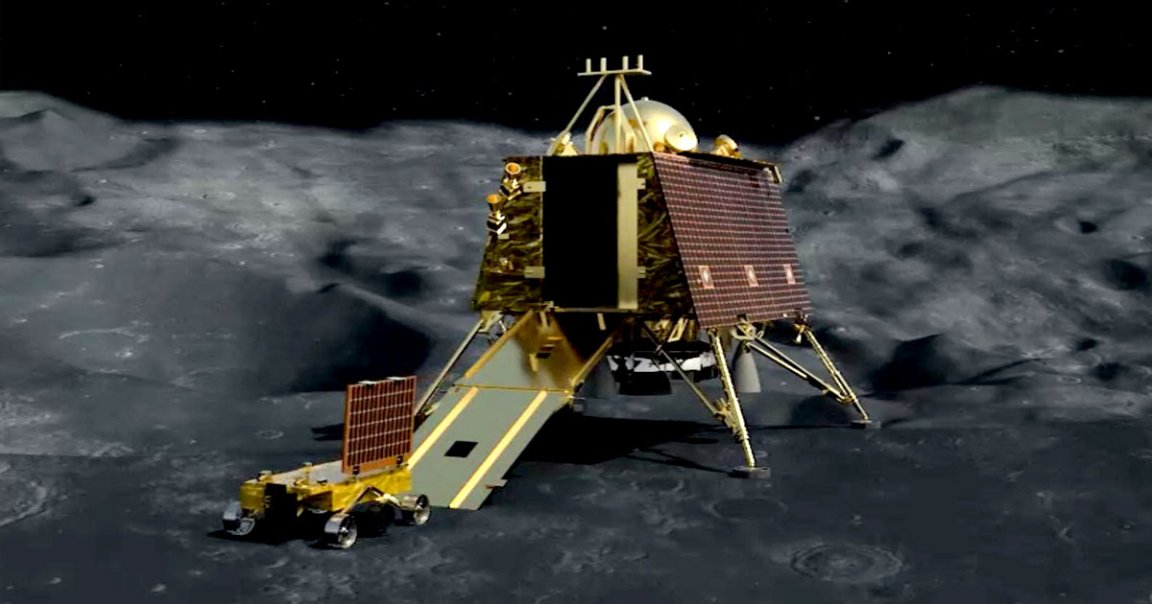
Historic Launch
India successfully launched its first-ever lunar lander as part of its Chandrayaan-2 mission early Monday morning local time after a “technical glitch” caused the launch to be delayed last week. The lander will take roughly a month to reach the Moon’s orbit, and a few weeks more to land on the surface.
“It is the beginning of a historical journey of India towards the Moon and to land at a place near the south pole,” Kailasavadivoo Sivan, chairman of the Indian Space Research Organization (ISRO), said during a speech after today’s launch, as quoted by The Verge. “To carry out scientific experiments; to explore the unexplored.”
Roaming Charge
If all goes well, the 1.4-ton lander, dubbed Vikram, could be India’s first object to softly land on the surface of our closest heavenly neighbor. The lander will then release a 56-pound mobile rover that will explore the area near the Moon’s south pole.
The rover would spend two weeks actively exploring the surface to look for traces of water ice — crucial research for future missions to the Moon. The total range of the rover is 1,640 feet, and once the Sun sets on the lunar surface — remember that a day on the Moon lasts for almost 30 days on Earth — the rover will lose its only source of energy and be retired.
India successfully completed its first lunar probe mission, Chandrayaan-1, in October 2008. The probe made a controlled impact near the south pole, ejecting subsurface soil to be analyzed later for traces of water by the mission’s orbiter.
READ MORE: India successfully launches its first lunar lander bound for the Moon [The Verge]
More on the mission: India Calls Off Moon Mission One Hour Before Launch